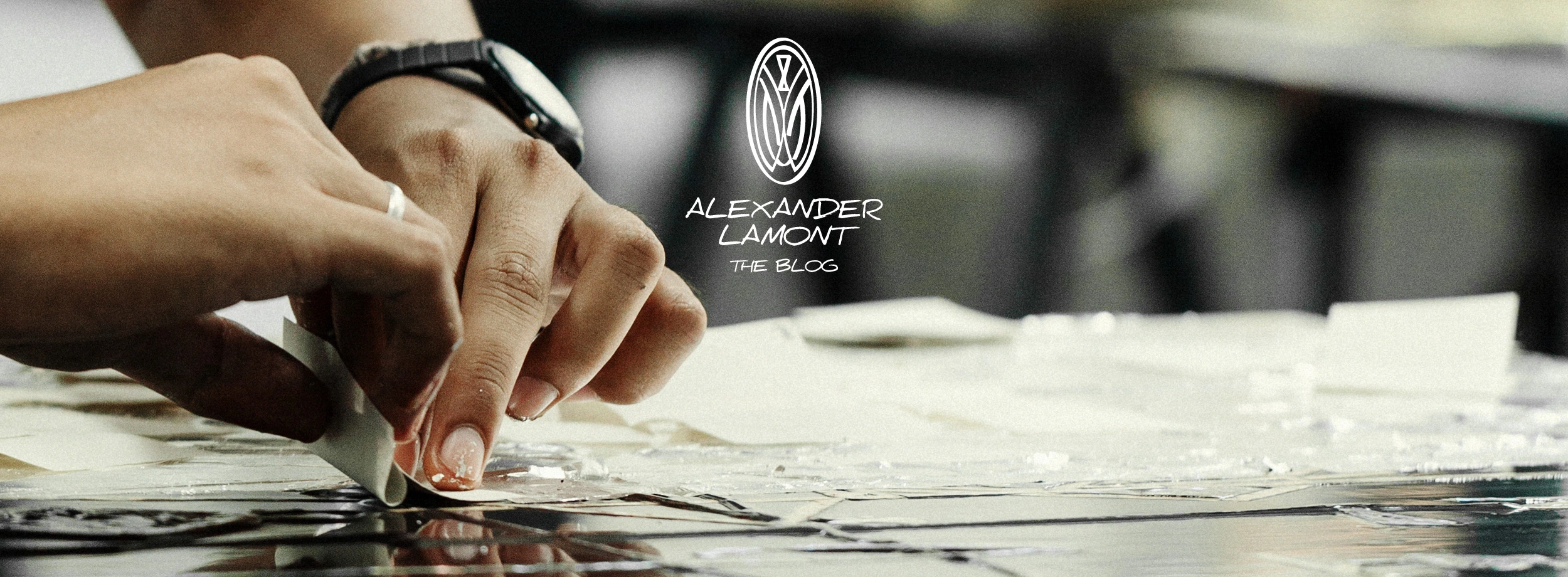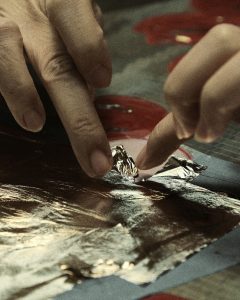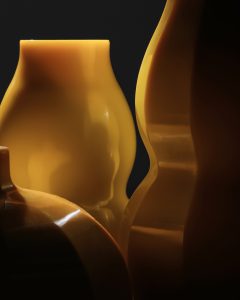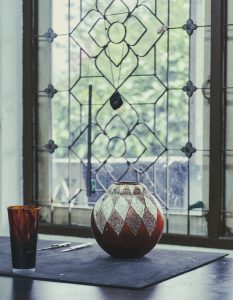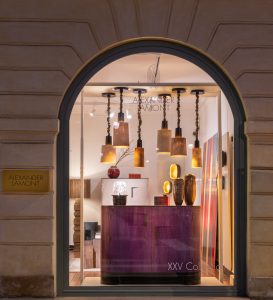I was once asked why straw fascinates me. Perhaps it is the fairy-tale idea of taking a humble material like the straw that filled the fields around my home growing up, and making it into something as beautiful and precious as gold.
I first came across the art of straw marquetry in a book about the genius decorator of the early Twentieth Century Jean-Michel Frank. Monsieur Frank made furniture and lighting from bronze, shagreen, parchment and wood, but his most iconic rooms and apartments had walls and furniture that were covered with straw marquetry. The special aspect of this straw is that it has a surface that reflects light uniquely and subtly – it can look a bit like gold in its natural colour. In the ebony and bronze colours we make it loses the gold but gains in bringing light to rich deep tones. One inspiring image shown below is of an apartment in the rue de Babylone, Paris, that shows the straw lining book cases. The linear straw catches the light and lends a warm, vital quality to the space – literally adorning and accenting the room with panels of light.
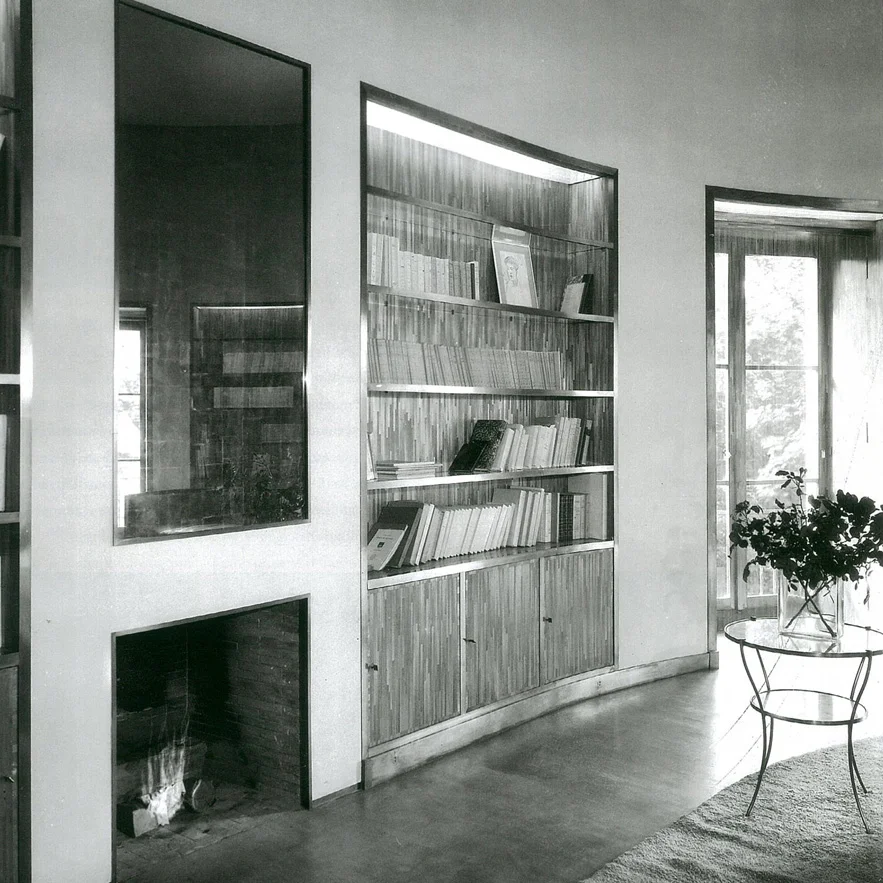
With these inspirations I started on a journey to discover the technique and sources for the material. The Musee des Arts Decoratifs in Paris has very limited examples of straw. Any books written about the process are long out-of-print. Existing artisans are few and far between and are justifiably guarded about the discoveries they have made and techniques they have invented. Just finding straw that has been dried and cured and prepared for marquetry is extremely difficult. Straw harvested for bread is destroyed during reaping while straw that is to be used for marquetry has to be planted and carefully cut. My wife’s family live in rural France, and it was through them that I discovered a farmer who produced straw for the Parisian marquetry experts. This farmer introduced me to a man from Lyons who works alone on private commissions and is considered one of the national masters of this most French tradition. He was delighted to come to Bangkok bringing tools, materials and most importantly a lifetime of skills and references to share with us.
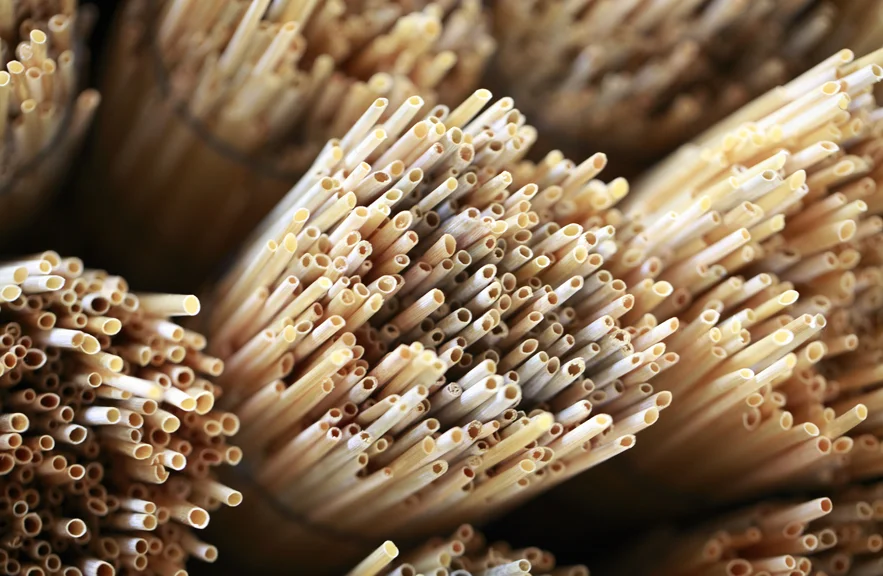
Since then we have used straw marquetry to make beautifully detailed cabinets, mirror frames and lamp bases, and have produced 100’s of square metres of wall panelling in straw marquetry for the flagship store interior of major retail brands. In April 2014 we launched the first ever wall panel line as part of our Le Mur collection. This includes the colours of Beechwood, Bronze and Ebony in Ligne (lines) and Étoile (sunburst) patterns on tiles of 1′ x 1′ and 2′ x 2′.
Straw is a subtle material that requires every person involved to work to the same colour palette, width of straw and strength of inlay. The material holds endless possibilities of pattern, tone and application. The process is entirely done by hand, and the workshop uses only hand tools and water-based adhesives and dyes that have been used for centuries. Enormous patience and quality control comes in the preparation of the straw and the final finish. The end result is a jewel-like luminous surface that plays with and reflects light and colour like nothing else.
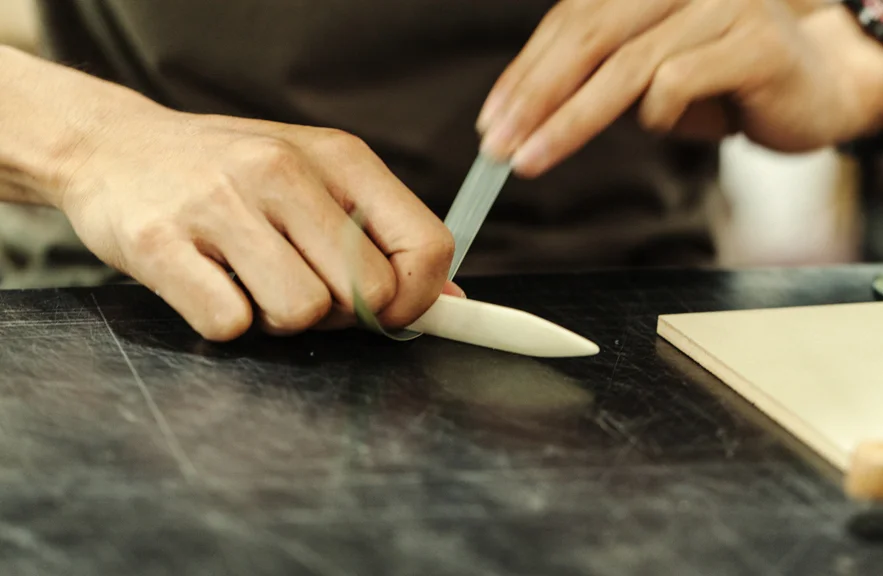
Flattening each individual blade of straw.
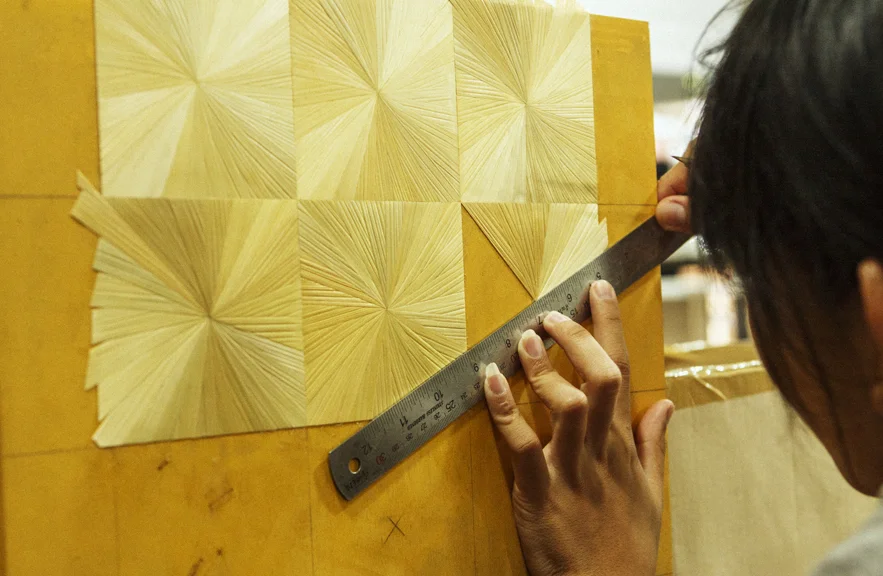
Each blade of straw must be precisely cut and inlaid.
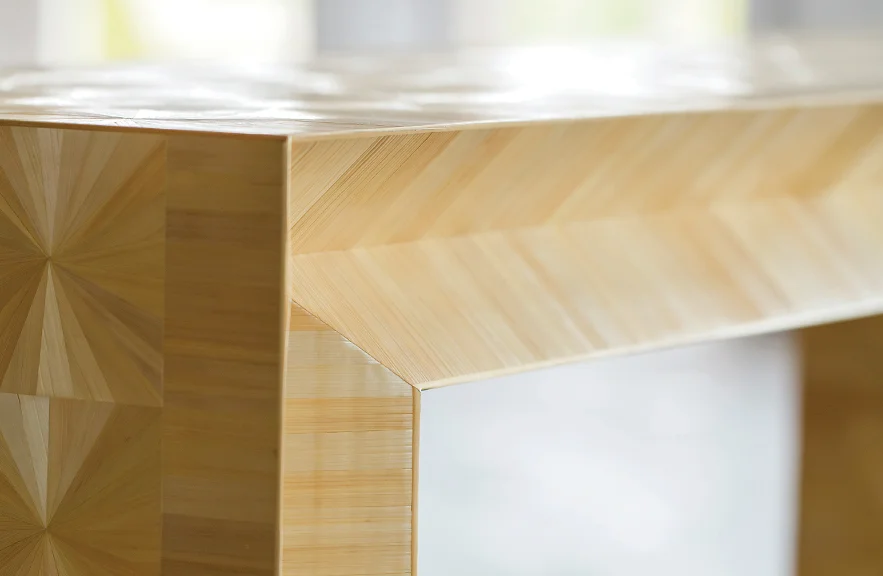
Close up of the Kertas Console.
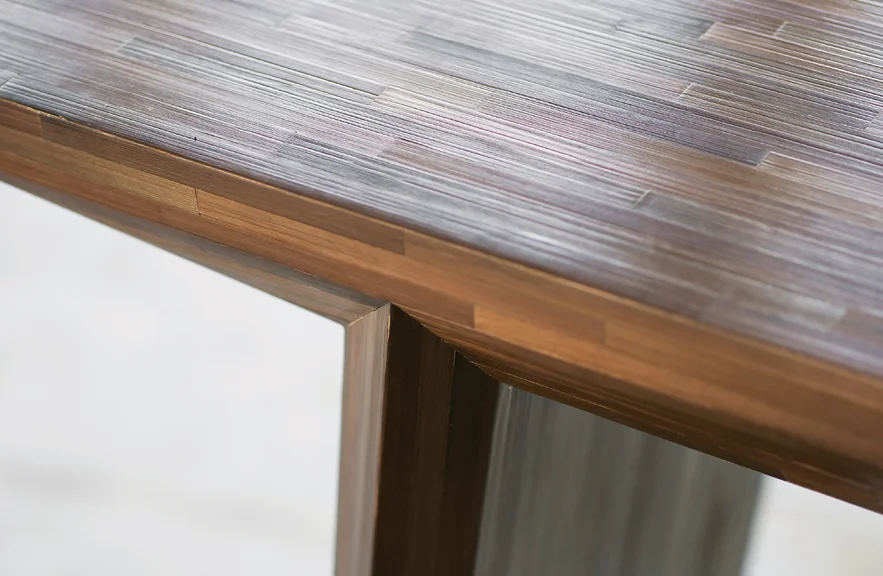
The straw is dyed a bronze colour for the Facet Console
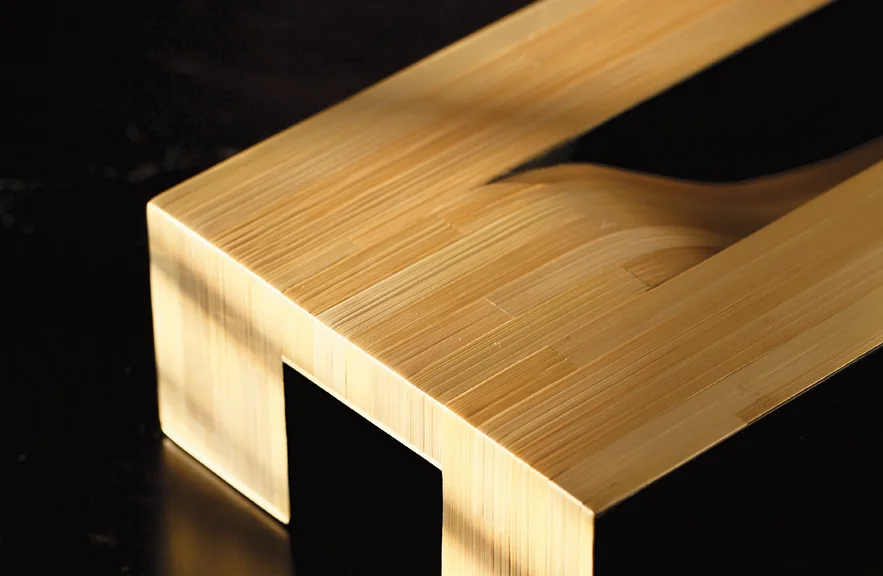
In the Kurei Vessel Tray we have combined natural straw with black lacquer to create a piece that is both sculptural and functional.
